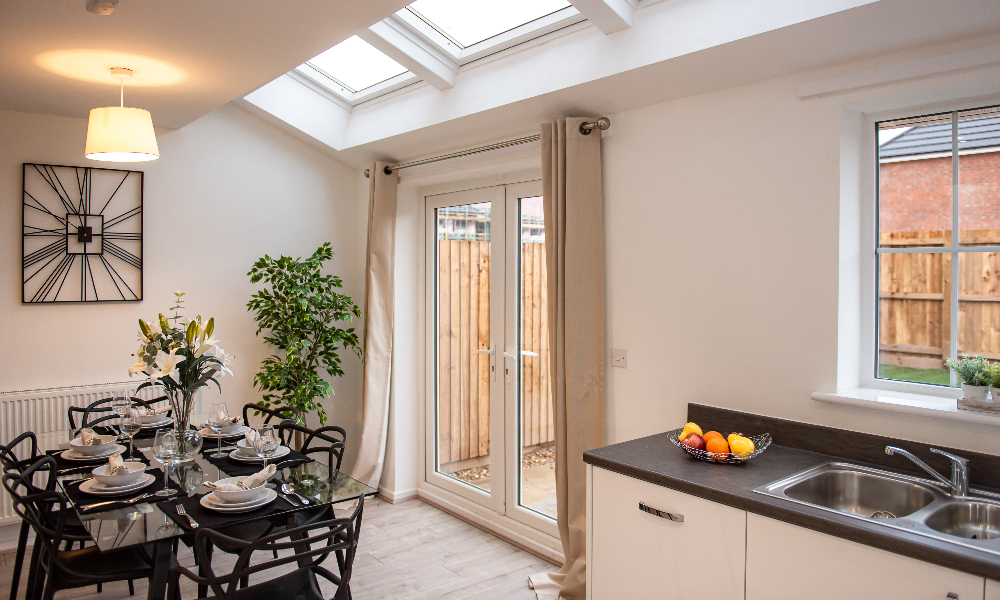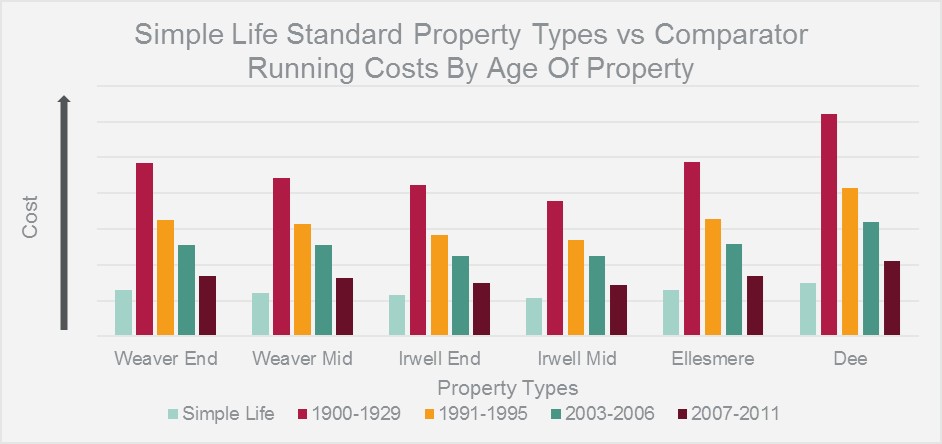Simple Life Homes Are 25% Cheaper To Run
Simple Life announces findings of energy modelling study – with homes 25% cheaper to run than properties built up to 2011.

One of the UK’s leading build-to-rent providers, Simple Life has announced the findings of a study to compare the energy consumption of four of its core properties against four other eras of homes. The findings revealed that current Simple Life homes are 25% cheaper to run in comparison to properties built between 2007-2011, and as much as 74% cheaper than older homes.
With a new energy price cap effective from the 1st October 2022, consumers are naturally concerned about the soaring costs of heating their homes this winter.
Last month, research by Nationwide* reported the impact of the anticipated price cap increase on properties of differing efficiencies, with the best rated (A-C) seeing an annual rise of almost £1,000, and the worst rated (F/G) will rise by £2,700 per year. Prime Minister Liz Truss has since announced a price cap freeze of £2,500 per year, but details of how this will vary between households is yet to be confirmed – the unpredictable turbulence of the energy prices is of great worry to both the public and Government.

To support the findings of the study, Simple Life conducted market research with renters all over the UK** to uncover attitudes towards sustainability in the home. 74% of people surveyed think it is important to factor in the energy efficiency of the property when looking for somewhere to rent, whilst 61% think the specific features (insulation, glazed window, smart meters) being installed is important to consider. Overall, the focus group revealed that renters worried that sustainable living and utilising these features would come at a higher cost, rather than understanding the potential money-saving benefits.
Rob Sumner, residential investment director at Simple Life said: “No one is going to be immune to the soaring prices of energy this winter, so it was important for us to understand the comparative energy consumption of our homes. We chose to compare four of our homes to four different eras of homes, from those built in 1900 to those built in 2011 – we chose these four eras as they demonstrated a change in efficiency, which with the exception of the period properties was driven by homes which adhered to changing building regulations over time.
“We are very pleased that the study revealed that the running costs were markedly in favour of our properties. Given the current upward movement in energy prices, we hope that our Simple Life residents can seek comfort in the data, knowing that their homes are operating at the most energy efficient level. We intend to continue to work with our residents to educate them on sustainability in the home, to help them understand how to make the most of the energy efficiency features and reap the financial rewards in the longer term.”
*Taken from Nationwide House Price Index, August 2022
** Source: Simple Life Market Research 2022 including a 2000 participant UK wide renter survey and focus group.
Study methodology:
We instructed a leading sustainability consultancy to look at the relative efficiencies of our homes and we chose four of our core house types of 2-4 beds for them to assess. (Weaver, Irwell, Ellesmere and Dee). The report was commissioned to demonstrate the comparative energy consumption of these homes against four other eras of housing from age band A (1900-1929) through to age band D (2007-2011), using a consistent energy cost across all types. Each of the comparator house types was chosen as it demonstrated a significant step change in efficiency over the previous one.



